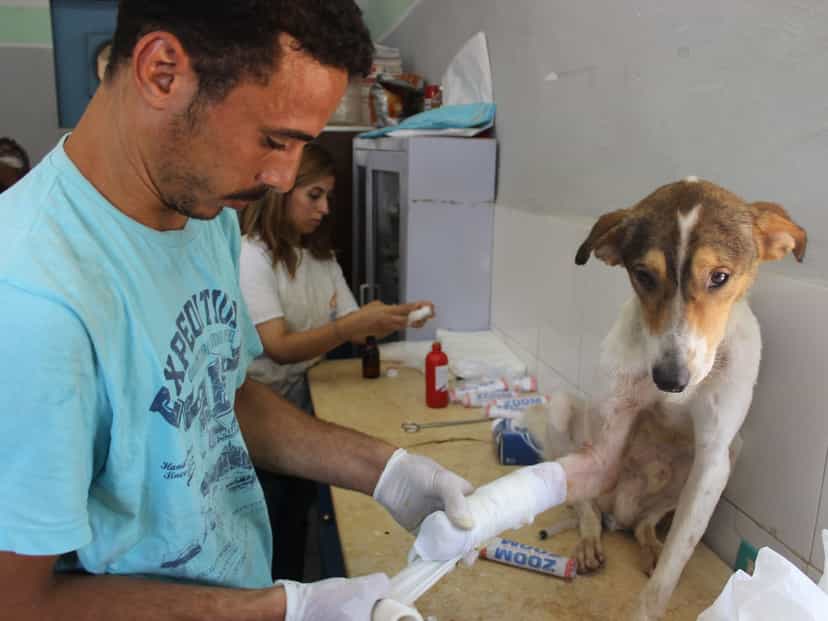
When placed in a stressful situation dogs will have reduced or negligible rational thinking as the brain is overtaken by the flight/fight/freeze response. Most dogs will choose the ‘flight’ option but, if this is not possible (including if the dog is injured and/or restrained), may be forced to ‘fight’ using their teeth. We discuss how to temporarily muzzle a dog so that the first aider is safe to provide treatment.
Stress is an absolutely normal canine behaviour in an emergency (first aid) situation.
We discuss it during our courses because of its implications on the actions of the first aider. When placed in a stressful situation dogs will have reduced or negligible rational thinking as the brain is overtaken by the flight/fight/freeze response. Most dogs will choose the ‘flight’ option but, if this is not possible (including if the dog is injured and/or restrained), may be forced to ‘fight’ using their teeth. We discuss how to temporarily muzzle a dog so that the first aider is safe to provide treatment.

Even taken away from the context of a first aid situation, dogs can display a wide range of stress signs. As with humans, dogs are individuals and will vary in their behaviours so it is important to recognise and understand each individual animal. Being able to recognise signs of mild stress in your dog, being sensitive to how they feel, will promote a better relationship between you both and a happier dog.
You may have heard of the ‘stress bucket’. Every dog is unique and the exact situations that trigger a stress response will vary depending on that dog’s life experience. It’s important to understand the triggers for your own dog and recognise when that ‘bucket’ might be getting full. It’s perfectly OK to take some time out, miss a walk or cut a walk short if your dog is stressed. In fact it will be safer and more beneficial to your dog’s well-being to do just that.
The 'canine ladder of aggression'
The ‘canine ladder of aggression’ is a useful tool in describing potential signs of stress and explaining the progression from mild stress signs such as turning the head away, blinking and yawning, to the more extreme and clearer signals of growling, snapping and, ultimately, biting.

The dog’s overall body language must be considered as many of the milder signs can have multiple meanings. Context is important. Responses can escalate very quickly too, especially if the dog feels unable to escape the situation, so being able to spot the signs early and help the dog by managing the circumstances is important.
Unfortunately, dogs are also often discouraged from showing ‘aggressive’ behaviour such as growling. Personally I’d much rather have a dog that provides the warning of a growl than one which goes from the more subtle signs (which can easily go unnoticed) straight to a bite.
Returning to the first aid context, a stressed dog is much more likely to have an accident than one which is not stressed. A stressed dog, in the instinctive fight/flight/freeze response, is less aware of its surroundings and, therefore, may bump into things or knock things over causing injuries such as burns, bleeds or blunt trauma. A stressed dog may try to jump a fence or gate, or run into a road.

A dog that displays signs of stress that are out of character, sudden onset or without any obvious external cause may have a medical issue. Watch out for changes in toileting and eating routines as well as changes to behaviour.
As well as being able to recognise signs of stress we would always advise any dog owner or carer to take a dog first aid course, just in case. Most people don’t realise the importance of having these skills until they need them! There are now approximately 12.5 million dogs in the UK and most of these will have an accident at least once during their lifetime.
Dog First Aid Training offer the Continued Professional Development (CPD) accredited Emergency Canine Care™ (ECC) course. The course is written by vets and is regularly updated. Examples of the life-saving skills and knowledge you can gain from a canine first aid course include CPR, choking, GDV/bloat, shock, bleeding, seizures, heat stroke, burns and scalds, toxic ingestion and road accidents.


